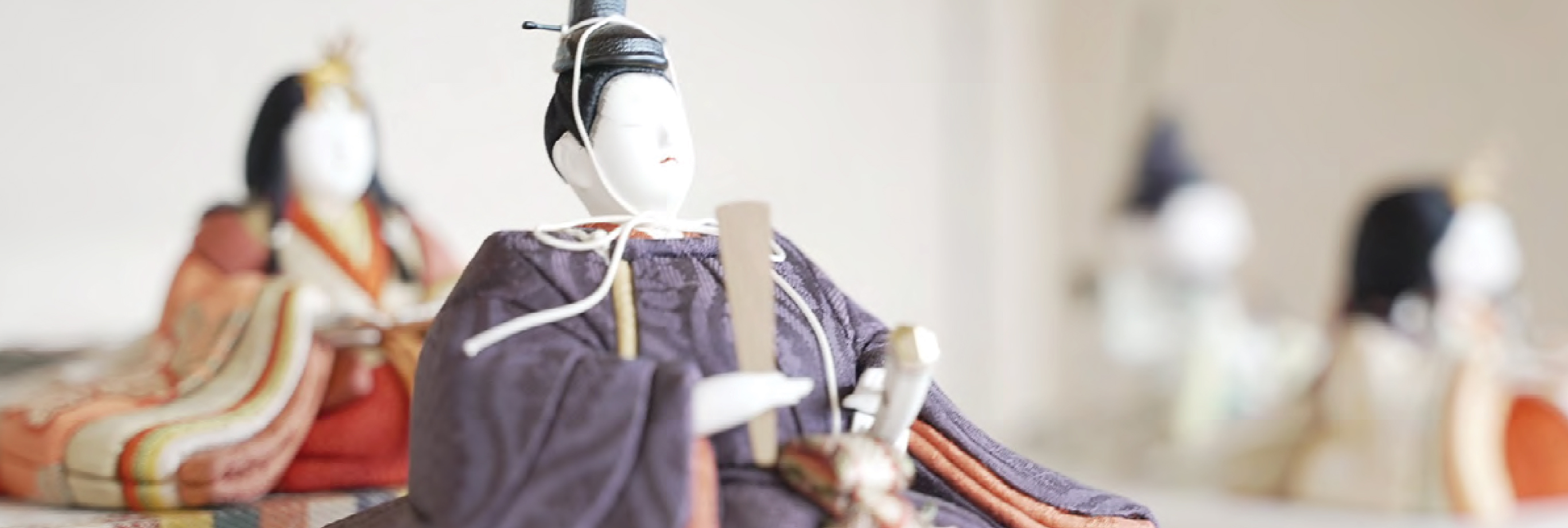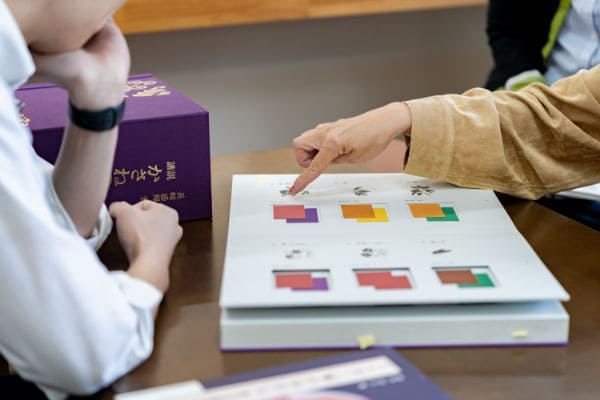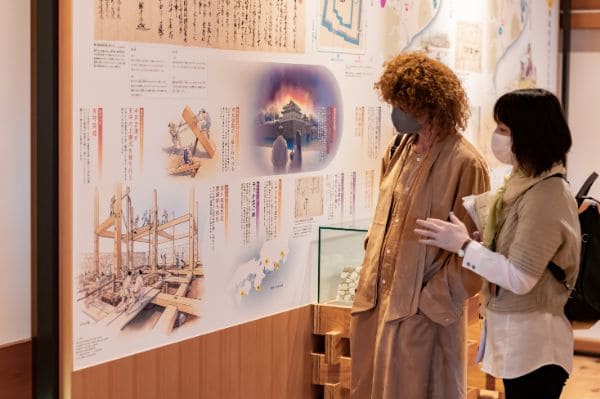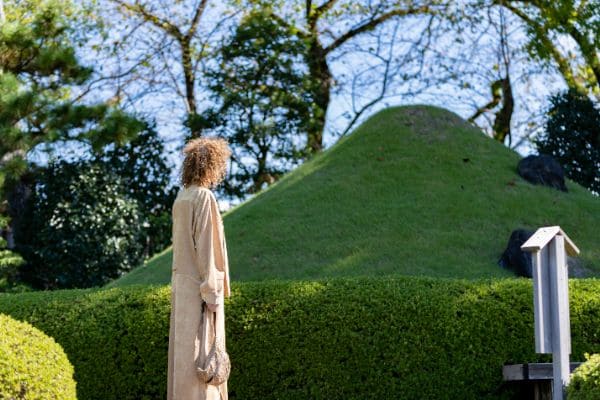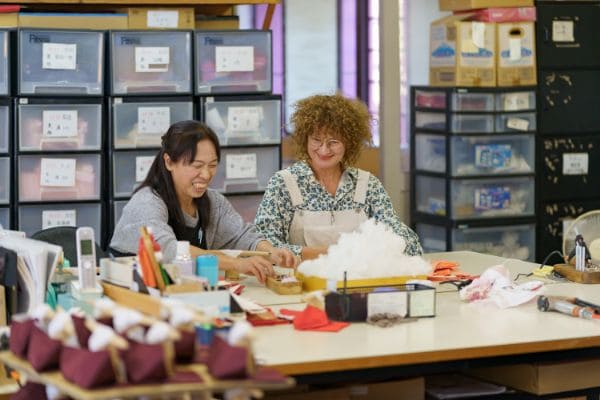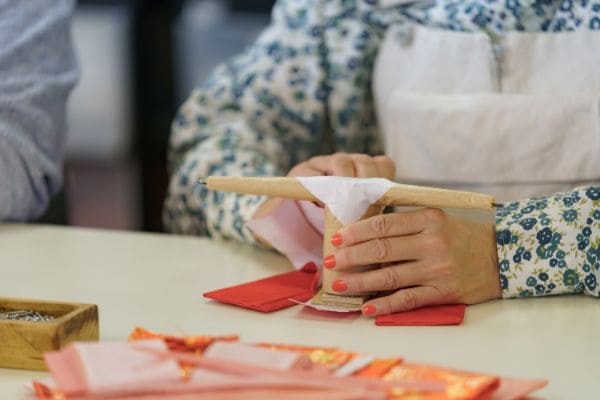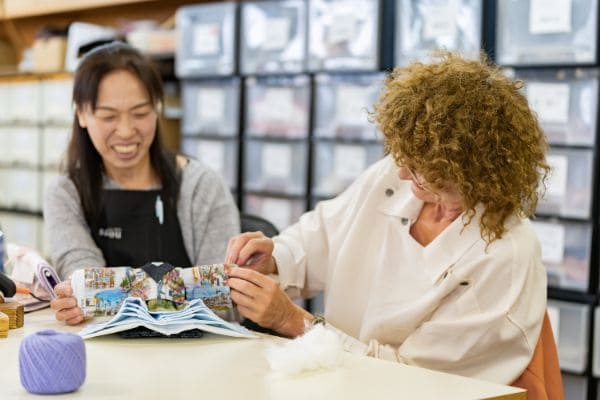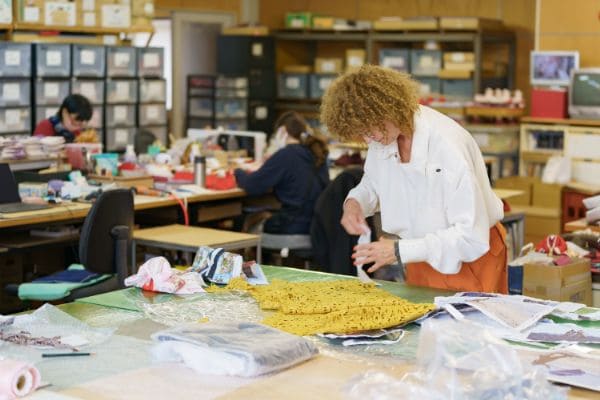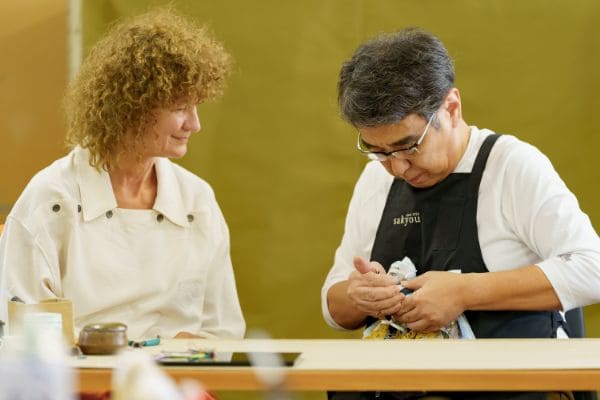About Sakyou Hina Doll Atelier
Founded way back in 1923 in the city of Shizuoka, Sakyou Hina Doll Atelier is a workshop performing all steps in the doll-making process, from design and sewing to dressing. For almost 100 years, it has managed to preserve a traditional Japanese craft that has continued since the Heian period (794-1185). Kazuhito Mochitsuki, who is third in the line of doll makers heading the workshop, is refining and passing on the historical, cultural, and technical elements, while Takuya Mochitsuki, the fourth in the line, continues to take up the challenge of doll making for the new age. Looking ahead to the next 100 years, the workshop continues to design hina doll figures that are true to the tradition.
The process of hina doll making
-
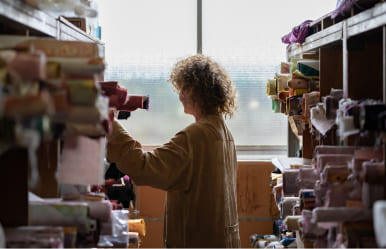
01.Selection of fabrics
The artisan selects kimono fabrics by referencing traditional Japanese patterns and colors, and color matching. The selections are carefully made from the rich assortment including genuine Nishijin brocade and other pure silk fabrics as well as sumptuous gold-brocaded fabric.
-
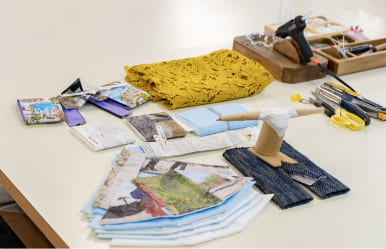
02.Fabric cutting
The artisan pastes washi handmade paper, which is used as backing to straighten out the kimono fabric, onto the fabric, and then cuts both the fabric and the backing washi. Next, the pieces of fabric are sewn together in the shape of a kimono.
-
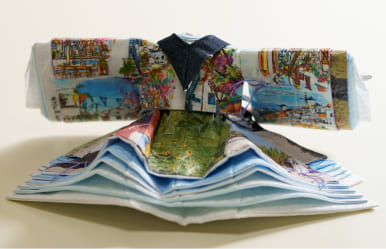
03.Dressing
The artisan delicately attaches the kimono to the body forming the core of the doll in a manner that will orchestrate the doll’s beauty in the kimono, in respect of the balance of the 12 layers of garments worn by the princess, the sokutai court dress of the prince, and other points.
-

04.Finishing
Once the doll is dressed, the artisan performs the kaina-ori (literally “arm bending”) work of putting everything into the proper shape and form to make the finished product. This task consists of arranging the position of the shoulders, the position and bend of the arms, the way the hands are clasped, the elegant flow of the kimono, and other items.
-

It is the process that most showcases the individuality of the doll maker, and its importance may be gathered from the fact that the doll maker can even be identified by the lines of bends. Most of the value of the doll is determined in this step.
-
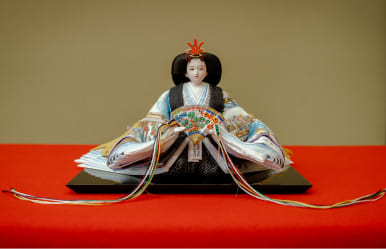
The birth of hina dolls
The Doll Festival dates back to the Heian period. In those days, it was customary to pray for freedom from sickness and disaster, to call onyoji diviners to petition the kami of heaven and earth, to make offerings of foods in season, and to transfer one’s own ill fortune to a doll and cast it into the sea or a river. With the passage of time, girls in the upper class played house with dolls in a pastime called hiina-asobi. It is said that, over a long period of time, the aforementioned custom and hiina-asobi became melded into today’s Doll Festival. It is also thought that the Doll Festival came to be celebrated on March 3rd (in the lunar calendar) in the Muromachi period (1333-1573). In the Shizuoka county of Shida, Tenshin dolls modeled on Sugawara Michizane have been made since the Edo period. One theory has it that the Suruga hina dolls originated with the practice of putting garments on the Tenshin dolls. As noted above, artisans from across Japan were recruited for the rebuilding of Ieyasu’s castle, and many settled down in Shizuoka. The production of tools by lacquerers who stayed helped hina doll making in Shizuoka to grow as an industry.
Deshitabi Schedule
The program schedule is subject to change without notice.
DAY 1
| 09:00 - 11:30 | Selection of fabric for original dolls at Hina Doll Atelier Sakyou (check of any fabrics brought along) |
|---|---|
| 11:30 - 12:00 | Tour of Sunpu Castle Park |
| 12:00 - 13:00 | Lunch in the central business district |
| 13:00 - 14:30 |
In Sunpu Castle Park’s Tatsumi Turret / learning about the history of traditional
industry and culture in Shizuoka In Sunpu Castle Park’s Momijiyama Garden / experience of a Japanese-style garden and Shizuoka green tea |
| 14:30 - 15:00 | Head to Takumishuku, Traditional Hand Craft Arts Center |
| 15:00 - 17:00 | Tour of Takumishuku, Traditional Hand Craft Arts Center |
DAY 2Practice and make your first hina doll
| 09:00 - 09:10 | Morning gathering and self-introduction |
|---|---|
| 09:10 - 10:00 | Lecture on the Doll Festival, hina doll history & culture, and technical know-how behind doll making |
| 10:00 - 11:00 | Description of the various parts and types |
| 11:00 - 12:00 | Pasting and cutting practice |
| 12:00 - 13:00 | Lunch with other artisans (to be prepared individually) |
| 13:00 - 15:00 | Dressing practice |
| 15:00 - 17:00 | Kaina-ori practice |
DAY 3Create an original hina doll using your own choice of fabrics
| 09:00 - 12:00 | Dressing (original doll) |
|---|---|
| 12:00 - 13:00 | Lunch with other artisans (to be prepared individually) |
| 13:00 - 15:00 | Kaina-ori (original doll) |
| 15:00 - 17:00 | Check the finished doll (with guidance from the workshop owner), selection of face, and selection of base |
Sakyou Hina Doll Atelier
Based in Shizuoka City, established in 1923. Sakyou designs and sews kimono for hina dolls and
dresses them. For about 100 years, they have been preserving this Japanese traditional craft
that was created since the Heian period. Sakyou aims to design a new tradition for the next 100
years.
https://sakyou.co.jp/

